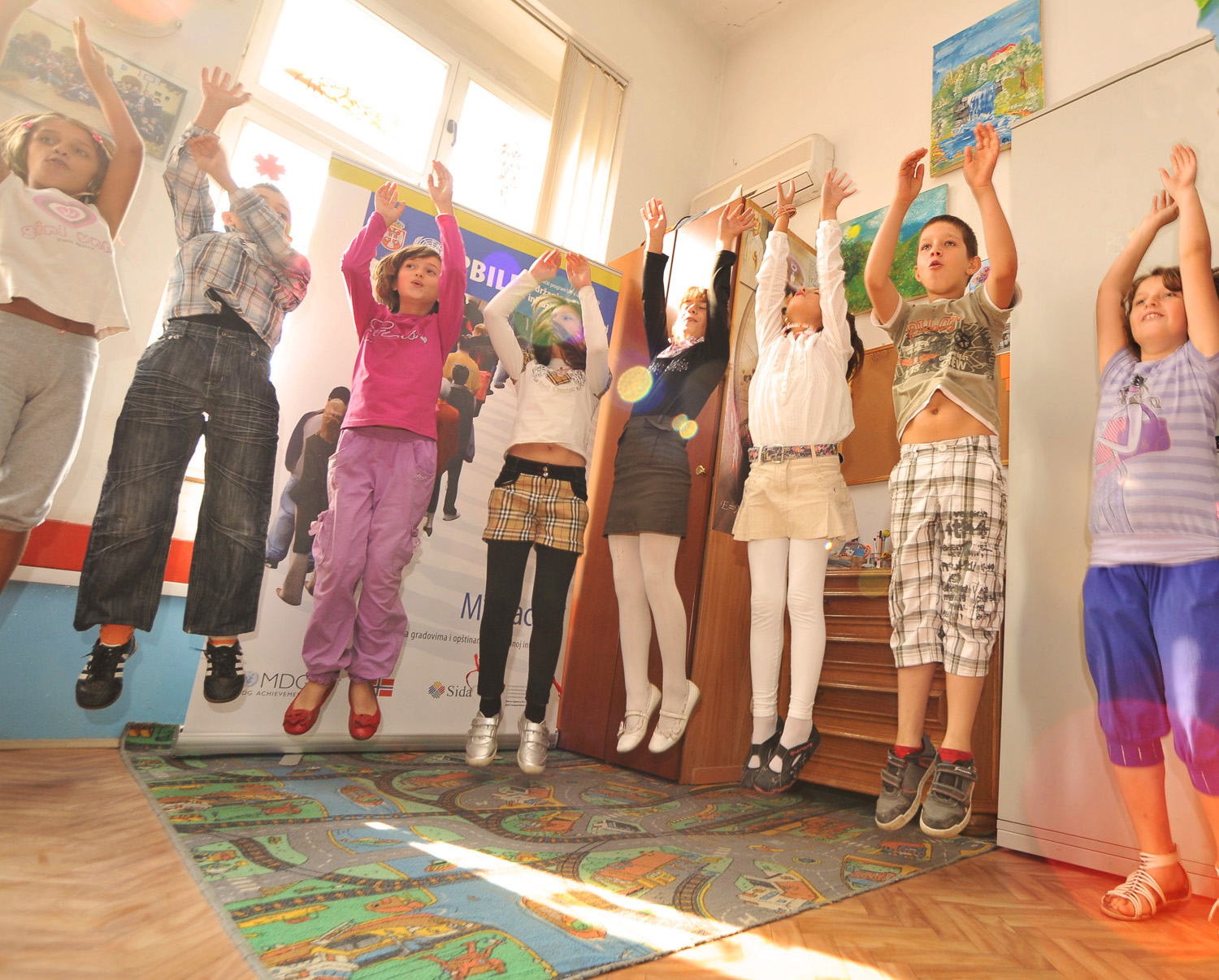

How do I draw the “Right to love?”

Passers-by stopped and peered in through the windows of the center in Bujanovac, a multi-ethnic town in southern Serbia, drawn by the laughter and songs of children.
Inside, 50 youngsters from first to eighth grade were gathered for a workshop funded by the MDG-F to improve understanding between the region’s many ethnic groups. Children of Roma, Albanian and Serbian ethnicities had an opportunity to express themselves through songs, dances, theatre and a creative exhibition of drawings they made during the workshop.
"The workshop programme was designed for children to get to know one another and learn about their rights through play, drawing and inter-action, irrespective of their ethnicity," noted Milena Dimitrijevic, one of the moderators. "They performed a short play – Children to Children - and made an exhibition of drawings, with which they expressed their understanding of children's rights".
Questions poured in from all sides and in all three mother tongues. "I have a right to love, but I do not know how to draw it," seven-year old Stefan shouted loudly.
Armando, a little older than Stefan, happily approached and showed him a red heart, which he stated was the symbol of love.
“It is not always easy to explain some things to children. We are trying to explain things to them in a simple way, which respects their age," said Suzana Pantović from the NGO Nexus, which hosted the event. "They instinctively help each other to the limits of their knowledge."
The workshop is part of a campaign to raise awareness of migrants’ rights, and is a component of the MDG-F-funded UN joint programme on Peacebuilding and Inclusive Local Development (PBILD) in southern Serbia.
“PBILD research showed that migrants, and potential migrants, lacked a great deal of information, so we joined forces with the NGO Nexus to boost their knowledge,” said PBILD Programme Manager Nicholas Hercules. “The children then help their parents better understand realities, too,” he added.
The programme has hosted numerous other workshops and roundtables for children, young people and adults in nearby towns on human and children's rights, mental health, access to public services, as well the promotion of Serbia’s cultural identity.
The PBILD programme, a collaboration between five UN agencies (UNDP, UNICEF, UN-Habitat, UNHCR and IOM) and the Serbian government, is aimed at lowering the risk of conflict by creating stronger, more integrated communities in southern Serbia with greater prosperity and less discrepancies in wealth and employment between ethnic groups.
The MDG-Fund’s mission is to help countries to attain the Millennium Development Goals of halving the number of people living in poverty and hunger by the year 2015. Achieving stability is a key factor in that process.
Click here to read about the MDG-F's work in Serbia.
Click to read Success Stories from our work fighting poverty and improving livelihoods around the world.